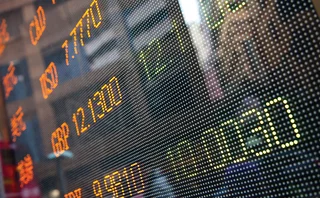
Collars make a comeback for Asian fuel hedging
In 2008/09 airlines suffered large losses from their hedging programmes, some of which involved taking highly leveraged positions on the downside to pay for upside protection. With unrest in the Middle East in 2011 pushing prices higher and hedges getting more expensive, carriers face similar market dynamics to 2007/08. What lessons have they learned in managing positions this time around?

During the last market bull-run, oil prices steadily climbed to more than $140 per barrel by mid-2008, with some commentators at the time believing that prices could be driven as high as $200 a barrel. Airlines were faced with a dilemma in managing their fuel costs, which on average account for about 40% of operational costs for major carriers and can be as high as 70–80% for budget airlines. Oil prices were set to continue to rise, but volatility and the rising price made hedging against
Only users who have a paid subscription or are part of a corporate subscription are able to print or copy content.
To access these options, along with all other subscription benefits, please contact info@risk.net or view our subscription options here: http://subscriptions.risk.net/subscribe
You are currently unable to print this content. Please contact info@risk.net to find out more.
You are currently unable to copy this content. Please contact info@risk.net to find out more.
Copyright Infopro Digital Limited. All rights reserved.
You may share this content using our article tools. Printing this content is for the sole use of the Authorised User (named subscriber), as outlined in our terms and conditions - https://www.infopro-insight.com/terms-conditions/insight-subscriptions/
If you would like to purchase additional rights please email info@risk.net
Copyright Infopro Digital Limited. All rights reserved.
You may share this content using our article tools. Copying this content is for the sole use of the Authorised User (named subscriber), as outlined in our terms and conditions - https://www.infopro-insight.com/terms-conditions/insight-subscriptions/
If you would like to purchase additional rights please email info@risk.net
More on Strategy
CTAs beat hedge fund rivals in 2014
Investors hope that CTAs’ fortunes have changed for good
Multi-strategy hedge fund assets surpass $400 billion
Investors flock back to strategy after years of trickling inflows
Hedge funds cautious on Argentina
How might hedge funds take advantage of opportunities in Argentina?
Hedge funds face growing risk, technology and data challenges
Sponsored feature: Broadridge Financial Solutions
A promising future
Sponsored statement: NYSE Liffe
Government bond traders see difficult markets heading into 2014
Your word is my bond
Hedge funds increase Asia quant investing risk capital by 50%
An improved Japan economy is ramping up quant investor activity across Asia
CTA trend followers suffer in market dominated by intervention
Return to normality







